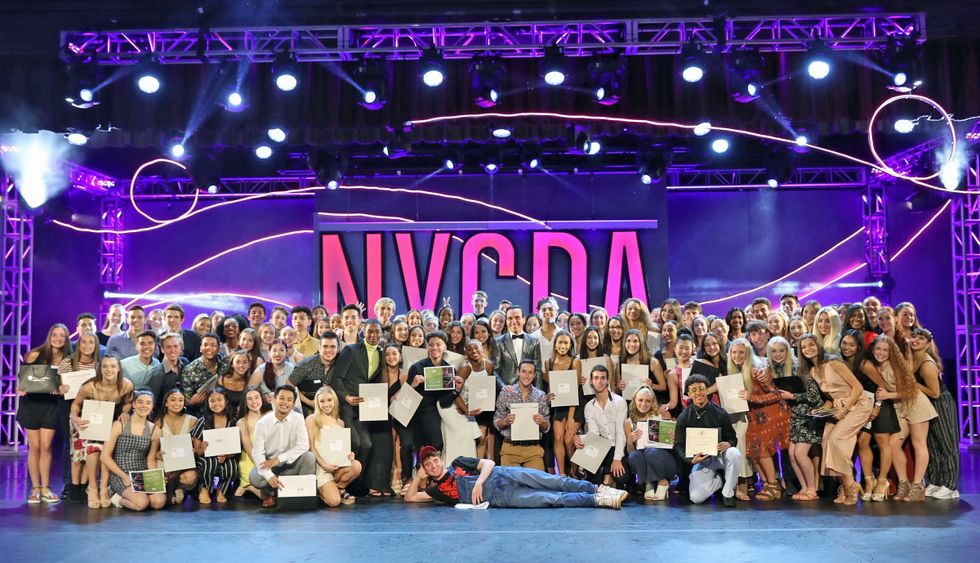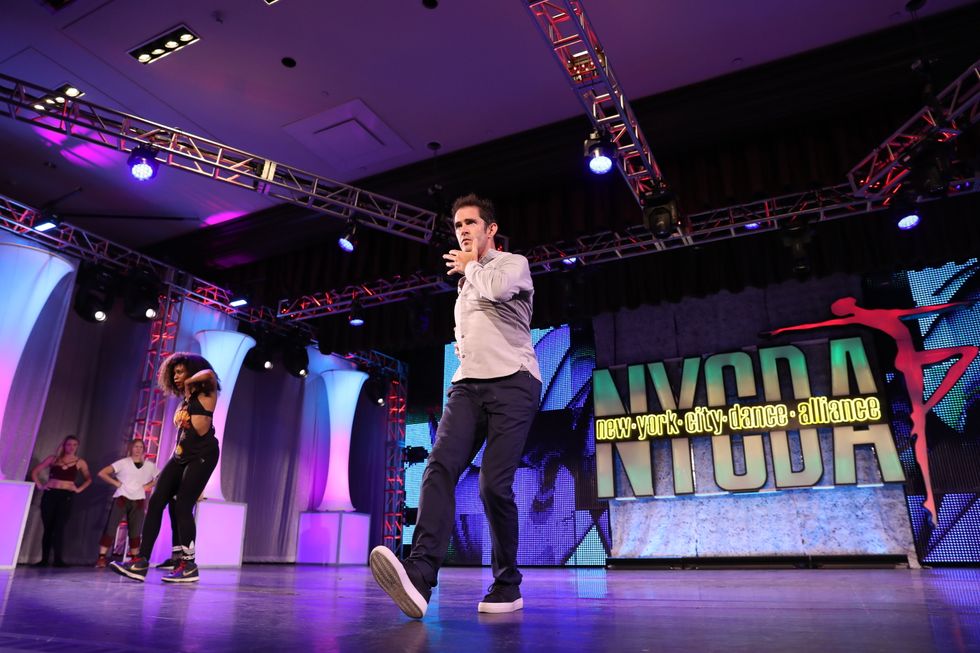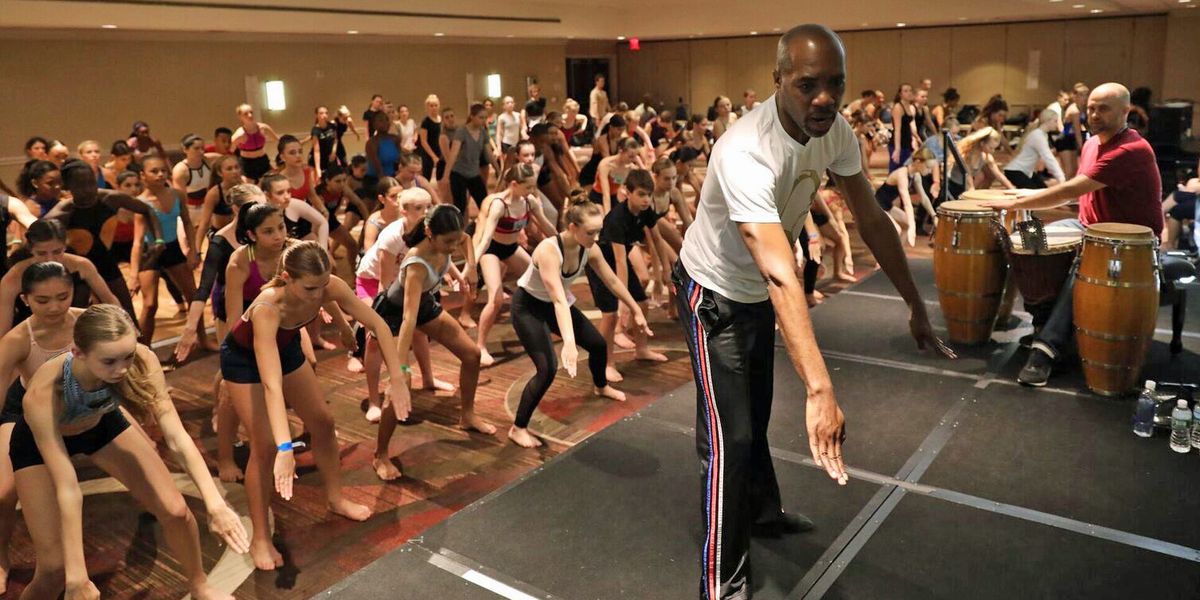NYCDA Is Redefining the Convention Scene Through Life-Changing Opportunities
Back in 2011 when Joe Lanteri first approached Katie Langan, chair of Marymount Manhattan College’s dance department, about getting involved with New York City Dance Alliance, she was skeptical about the convention/competition world.
“But I was pleasantly surprised by the enormity of talent that was there,” she says. “His goal was to start scholarship opportunities, and I said okay, I’m in.”
Today, it’s fair to say that Lanteri has far surpassed his goal of creating scholarship opportunities. But NYCDA has done so much more, bridging the gap between the convention world and the professional world by forging a wealth of partnerships with dance institutions from Marymount to The Ailey School to Complexions Contemporary Ballet and many more. There’s a reason these companies and schools—some of whom otherwise may not see themselves as aligned with the convention/competition world—keep deepening their relationships with NYCDA.
Now, college scholarships are just one of many ways NYCDA has gone beyond the typical weekend-long convention experience and created life-changing opportunities for students. We rounded up some of the most notable ones:

NYCDA founder Joe Lanteri with the 2019 college scholarship recipients
Courtesy NYCDA
College Scholarships
NYCDA has perhaps become most known for the massive amount of college scholarships they dole out every year. Both high school juniors and seniors have the opportunity to earn scholarship money: Juniors are recruited and offered scholarships directly from colleges, who participate in the annual NYCDA National College Scholarship Audition at their New York City-based Nationals every July. Seniors who already know where they’re attending school can also receive funds from the NYCDA Foundation.

NYCDA’s annual college audition
Courtesy NYCDA Foundation
This past summer, NYCDA had 180 dancers auditioning for college scholarships and 10 colleges—including Marymount, Point Park University, Pace University and University of the Arts—in attendance. The schools’ offers surpassed 10 million dollars, and the NYCDA foundation awarded $355,000.
Langan sees NYCDA as helping dancers gain a foundational building block in their career. “A college education is really important,” she says. “NYCDA has put its stamp behind it with this enormous event.”
Training Scholarships
Many conventions and competitions—NYCDA included—give scholarships back to their own organizations so that participants can attend a subsequent event. But what sets NYCDA apart is the fact that they also pay it forward, handing out training scholarships to other institutions at every single one of their Regionals. Whether or not students win any titles, they have the opportunity to earn scholarships to programs like Steps on Broadway (which Lanteri also co-owns and directs), Peridance Capezio Center, Broadway Dance Center, BODYTRAFFIC (where 50% of dancers are NYCDA alums), the Perry Mansfield Performing Arts School and more.

Andy Blankenbuehler teaching at NYCDA
Courtesy NYCDA
Career Opportunities
“NYCDA will put you in a room with people who will eventually pay you to dance,” says veteran Broadway dancer Corey John Snide, and he would know. Snide grew up doing NYCDA, earning the National Outstanding Dancer Award in the Mini, Junior and Teen age divisions, and is now on NYCDA’s faculty.
Even more important than the titles were Snide’s scholarship to Juilliard and introduction to Andy Blankenbuehler—both thanks to NYCDA—which led to some of his most notable career highlights including dance captaining for CATS on Broadway, assisting on the upcoming CATS movie, and landing a gig in the upcoming Broadway production of West Side Story.

Corey John Snide in CATS on Broadway
Courtesy NYCDA
At Nationals each July, students participate in Broadway audition workshops—often with the casting director, dance captain and choreographer in the room. While the workshops are primarily meant to help dancers hone their audition skills, it’s not unheard of for students to walk out of the room with a job. (When Newsies was on Broadway, the casting director even traveled with NYCDA to Regionals to scout talent!). At Nationals, real auditions for the Rockettes or to be Clara in the Radio City Christmas Spectacular are often held.
For Snide, friendships formed between participants are as valuable as those forged with faculty members and master teachers. “I can point to so many of my lifelong friends from NYCDA with outstanding careers,” he says. NYCDA’s alumni champion each other, often working together on projects later in their careers.

A CATS audition workshop at NYCDA
Courtesy NYCDA
Professional Development
Growing up in Albany, NY, Snide says he wouldn’t have even known being a professional dancer was a possibility for him without the exposure to the New York City dance scene that NYCDA provided him. While many conventions and competitions have moved their Nationals away from New York City, NYCDA has stayed—giving students of all ages the opportunity to learn from dance world giants.
Even at Regionals, NYCDA holds Friday Night Sessions, master classes with everyone from Tony nominees Joshua Bergasse and Warren Carlyle to principal dancers to artistic directors. “Dancers underestimate what it means to have the opportunity to be in the room with these people,” says Lanteri. NYCDA faculty members, too, are a valuable source of knowledge, connections and resources for students. “They’re incredibly caring and generous,” he says. “They are invested in these kids—and not just for two days.”
Ailey II artistic director Troy Powell has seen first-hand NYCDA’s long-lasting impact on one student’s career: A scholarship to The Ailey School led to an Ailey II offer which led to a contract with the main company. But before students can take advantage of these opportunities, Powell says that they need a first taste of what working in the professional dance world can be, starting with developing their own identities as dancers—which NYCDA also helps them do. “When I’m working with students and teaching them in New York City there’s an energy,” he says. “They come with such joy and excitement and willingness to be hungry and committed to dance and to becoming the greatest artist that they can become.”






